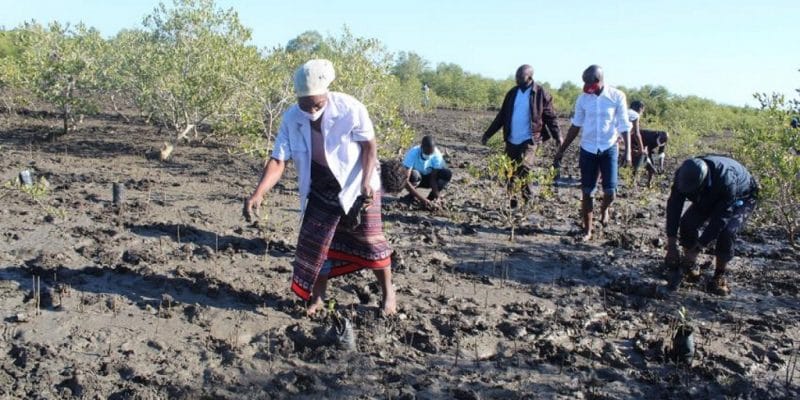The government of Mozambique and the company Blue Forest are embarking on a partnership to restore mangrove forests in the east of the country. The 30-year project will be implemented in two coastal provinces.
Mozambique is at the center of a mangrove ecosystem restoration project involving its Ministry of Marine, Inland Waters and Fisheries and Blue Forest, a developer of projects focused on mangrove forest restoration. The two partners have embarked on a project that, over a 30-year period, will restore 185,000 hectares of mangrove forests in Mozambique.
The project will be implemented in Sofala and Zambezia, two coastal provinces bordering the Indian Ocean. These provinces are mostly bordered by coastal reefs that are home to significant biological diversity. Mangrove ecosystems provide shelter for many species of fish, as well as a breeding ground and nursery for young fish. According to Romain Walcker, an engineer at EcoLab (the functional ecology and environment laboratory of the CNRS and Paul Sabatier University in Toulouse, France), mangroves are particularly effective at capturing CO2 from the atmosphere thanks to the mangrove tree, a fast-growing shrub species.
Using technology to restore mangroves
According to Blue Forest, Mozambique has more than 300,000 hectares of mangroves along its coastline, representing one of the largest expanses of mangrove forest in Africa. But these ecosystems are severely compromised by human activities. To restore these forests, the Mozambican government and Blue Forest plan to use high-resolution satellite imagery, LiDAR technology, and remote sensing data to identify key “hotspots” where restoration is most needed.
Read also- MOZAMBIQUE: Maputo receives $6.4 million to reduce CO2 emissions through REDD+
Artificial intelligence (AI) algorithms will then be used to decipher the satellite data and field measurements to conduct reforestation activities “accurately, efficiently and transparently,” says Blue Forest. The eventual goal is the planting of 50 to 100 million trees. The Dubai, United Arab Emirates-based company estimates that the project will offset about 200,000 tons of CO2 emissions per year, which is equivalent to taking 50,000 cars off the road.
Financing through carbon credits
“We are delighted to partner with the Ministry of Marine, Inland Waters and Fisheries and to work in coordination with all national and provincial institutions, as well as the local communities of Sofala and Zambezia on this flagship project. Tens of thousands of people and endless marine life will benefit from this project,” says Vahid Fotuhi, Blue Forest’s chief executive officer.
The mangrove forest restoration project will be financed by carbon credits that will be generated from reforestation and conservation activities over the 30-year partnership. For the record, a carbon credit is a unit equivalent to one ton of CO2 avoided or sequestered. For example, a tree planting project that sequesters 10,000 tons of CO2 could result in 10,000 carbon credits. These carbon credits are sold to companies, communities or individuals who are in a voluntary process, or even mandatory for industrial companies that pollute a lot. According to Blue Forest, the revenues will be shared among local and national stakeholders, in accordance with the guidelines established by the National Fund for Sustainable Development (FNDS) of Mozambique.
Jean Marie Takouleu







